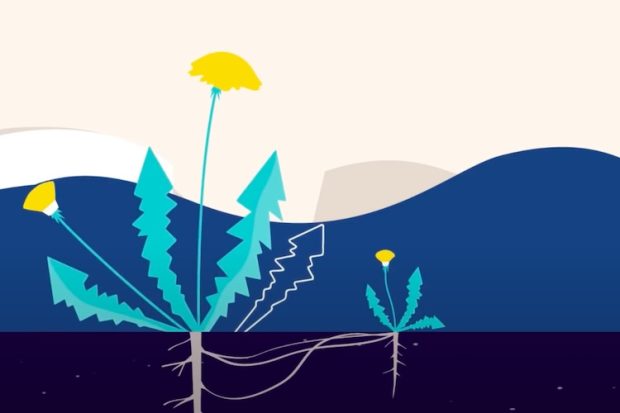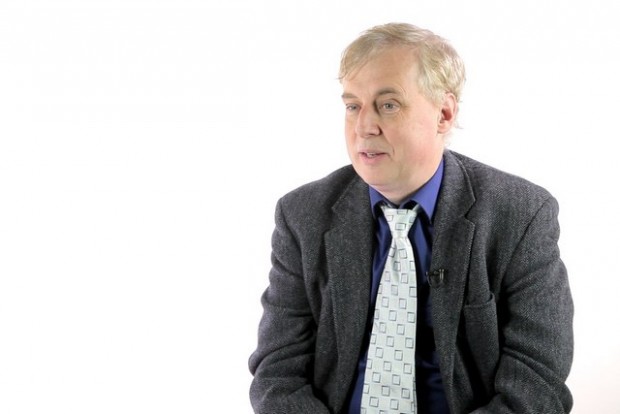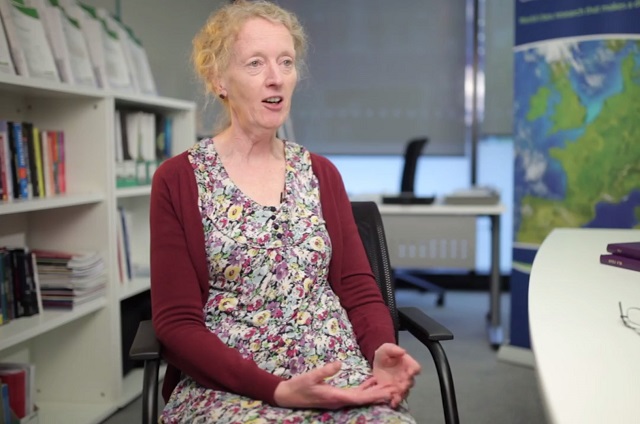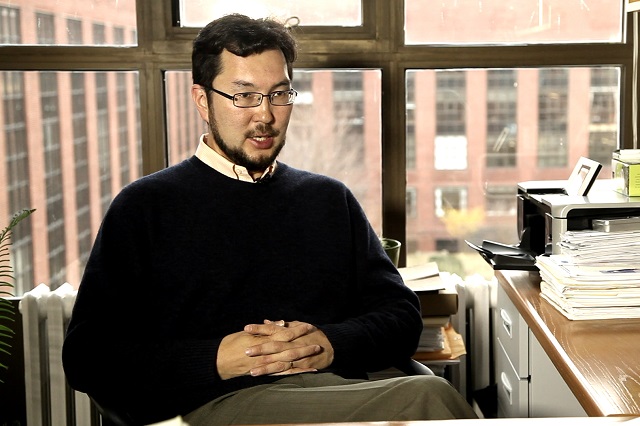Evolutionary Optimality and Plants
Professor of Biosphere and Climate Impacts Iain Colin Prentice on CO2 concentration in nature, photosynthetic discrimination, and photorespiration
videos | July 17, 2017
The video is a part of the project British Scientists produced in collaboration between Serious Science and the British Council.
Carbon dioxide is the basis of life, essentially. The atmosphere has a certain amount of carbon dioxide in it and that’s taken up by plants in the process known as photosynthesis, so the CO2 in the atmosphere around the plant and then the CO2 inside the leaves. Because that CO2 is being converted into sugars and ultimately all the tissues of the plant, it’s being drawn down to lower concentrations. There is a lower concentration of CO2 inside the leaf than there is outside. The question of the ratio of those two might seem to be rather a technical topic, which it is. But it also is very important from the point of view of understanding how plants actually work.

Now there have been experiments on this subject done ever since the late 1970’s. In fact, it became clear that ratio for a given type of plant is sensibly fairly conservative, fairly constant, that ranges somewhere from about 0.5 to 0.9. In fact, for most plants most of the time it’s only about 0.7 to 0.8. So it’s very tightly regulated by the plant. But then we have the question why is it what it is? Now we don’t really know still, and after about the century of research we still don’t know how stomata actually work. Just exactly how they do this trick is still very unclear. However, it’s pretty clear that there is a certain outcome, and we can study that outcome through the lens of evolutionary optimality.
Evolutionary optimality is the source of all of the rules in biology. There’s a famous statement by the geneticist Theodosius Dobzhansky that nothing in biology makes any sense except in the light of evolution. By using the concept that natural selection eliminates everything that doesn’t work or is inefficient, we can infer rules of biology that are, perhaps, not as exact as the rules of physics, but at least are as predictable, if you like, or as general as the rules of physics. That’s what a lot of my research now is aiming at and the place I chose to start with was the prediction of this ratio. And that’s partly because there’s a lot of data on, it is partly because we could also assemble a whole lot more data by the use of stable isotopes.
That requires a little explanation: there are two naturally occurring isotopes, unstable isotopes of carbon – carbon-12 and carbon-13. Carbon-13 is about 1% of the carbon in the world, in the universe indeed. So it’s quite rare, but the key point is that chemically it’s carbon, so he participates in all the reactions that carbon participates in. But many of those reactions go just a little bit slower with C-13 than they do with C-12, so that’s the general rule with stable isotopes, the heavy isotope tend to react more slowly. Photosynthesis, of course, is a reaction involving carbon and it’s no exception. So photosynthesis goes a little bit more slowly with С-13 and so there is a discrimination when photosynthesis happens, the discrimination against the heavy isotope and so plant material is always somewhat depleted in С-13.
And this can now be measured very routinely and cheaply with the mass spectrometer. So it’s possible to take hundreds of samples, we just send them off to the lab and have them analyzed. Many groups, of course, around the world have been doing this with plant material. The special thing about this photosynthetic discrimination is that it varies according to this ratio of the internal to the ambient concentration of CO2. It gives us a readout of the stomatal behavior, if you like, the behavior of these pores that let CO2 in and water out.

There is a trade-off between those two, because if a plant is going to have a low so called ci/ca ratio then it is able to invest less in water transport, but it then has to invest more in the biochemical machinery. Remarkably with nothing more than a sort of high school calculus, elementary calculus and some simple, some of the simplest possible equations to represent the trade-offs here in the investment in water transport versus biochemical machinery, we were able to make a quantitative prediction of how this ratio should vary in response to the temperature in which a plant is living, the dryness of the atmosphere in which it is living, and the atmospheric pressure, because the atmospheric pressure influences not only the partial pressure of carbon dioxide, which goes down as you go up with up in elevation, but also the partial pressure of oxygen.
There’s a story to the oxygen here, because the one enzyme called RuBisCO that does all of the photosynthesis in the world only ever appeared once. Sometimes it makes a mistake, sometimes it grabs on to an oxygen molecule instead of a CO2 molecule. And it’s a long pathway but it basically results is the CO2 being lost. It’s a process called photorespiration and it’s a sort of a nuisance. Plants can’t avoid doing it and they do it more at high temperatures, but they actually do it less at higher altitudes, because there’s a low partial pressure of oxygen. That turns out to be decisive and that is actually the explanation. So we claim that is the explanation for the effects of atmospheric pressure on this ratio.
The remarkable thing about our results here is that they actually work quantitatively, in other words, using a large compilation of data on the stable isotope composition, we have data from over three and a half thousand plants from all of the different habitats in the world, so we have a large dataset. We can infer statistically what are the partial effects of temperature, atmospheric dryness, and altitude. The numbers agree within quite narrow error bars uncertainty bars and they agree with our theoretical predictions. So we’ve got to a new level of understanding of this rather technical quantity. However, it doesn’t stop there, because there’s a very good reason why we wanted to know how this quantity behaves. Because this quantity is a component of the standard model of photosynthesis, the model of Farquhar in 1980, which is one of the most cited papers in biology and one of the best things that we have in this field, because it works extremely well and precisely. So using the Farquhar model then if we know, if we can predict from the environment what the value of this quantity should be, then we can actually predict the total amount of photosynthesis, and therefore the total amount of CO2 uptake on a large scale. That, of course, can then be tested in other ways.

Well, what we’ve done here applies to all of the plants that use the standard pathway of photosynthesis, so-called C3 photosynthesis which is all trees, most of the major crops except for maze and sugarcane, and most of the even the non-woody plants apart from tropical grasses. So C3 photosynthesis is a standard pathway and our analysis applies to all of the plants that use the C3 photosynthetic pathway. We can show that each plant functions, like when we divide up our data into plant functions, we can show that indeed they have different characteristic values. So in the end, this is very simple, we don’t need a complex model with different plant functional types in it, because these the so-called C3 plants are actually all behaving in the same way and following the same rules which are ultimately set by evolutionary optimality.





























